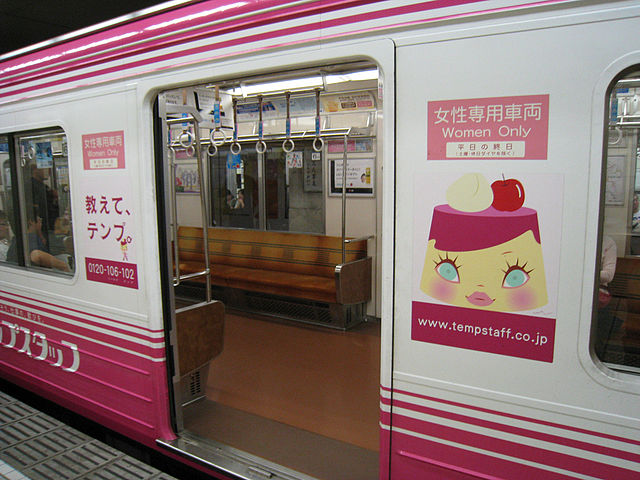Feminism in Japan began with women's rights movements that date back to antiquity. The movement started to gain momentum after Western thinking was brought into Japan during the Meiji Restoration in 1868. Japanese feminism differs from Western feminism in that less emphasis is placed on individual autonomy.
A women's rights group meeting in Tokyo, to push for universal suffrage.
Japanese women are increasingly embracing non-traditional activities and interests such as computer technology.
A women-only train car, to protect women from sexual harassment by male passengers.
Women's suffrage in Japan
Women's suffrage in Japan can trace its beginnings to democratization brought about by the Meiji Restoration, with the suffrage movement rising to prominence during the Taisho period. The prohibition of women from political meetings had been abolished in 1922 after demands from women's organizations led by activists such as Hiratsuka Raichō and Ichikawa Fusae. The movement suffered heavy setbacks during and after the Great Depression, when support for democracy began to wane and military influence over civilians increased dramatically. The first election by universal suffrage without distinction of sex was held in 1946, but it was not until 1947, when the constitution for post-war Japan came into effect, that universal suffrage was established In Japan.
A suffragette meeting in Tokyo
Women voting in Japan during the Taishō period
Ichikawa Fusae in 1947
The first women in the Japanese Diet, 1946






